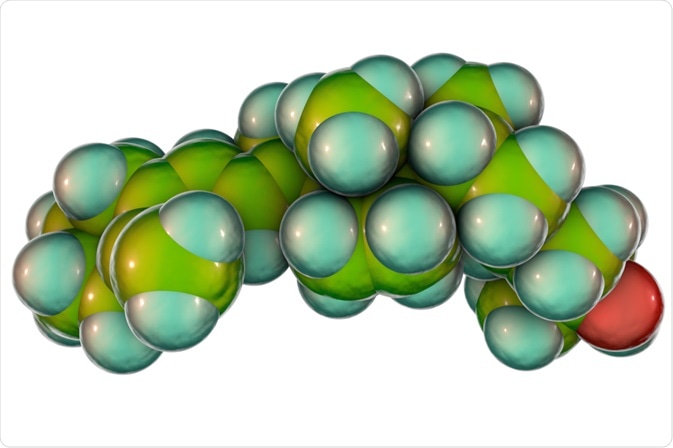Biological systems and metabolomics
Biological systems are complex, and deepening our understanding of how they function, particularly human biological systems, is at the root of improving human quality of life through preventing diseases and improving their treatments.

Image Credit: Kateryna Kon/Shutterstock.com
While scientific studies have allowed us to make a huge advancements in our knowledge of biological systems, there is still much more to be learned. Currently, the combination of computational and mathematical analysis and modeling, known as systems biology, is leading the way in furthering our knowledge.
Initially, systems biology has mostly been concerned with the interactions of genomics, proteomics, and transcriptomics. However, these disciplines only indicate the potential for producing a certain biological outcome, and the expressed phenotype is not the focus.
Metabolomics, on the other hand, profiles the metabolites existing within cells and tissues, representing the endpoints of biological activity.
Metabolomics has already made a great impact in numerous scientific fields, such as diagnostics, disease modeling, and toxicology.
Research has also shown that it adds value to genomic and proteomic data and may prove vital to furthering our knowledge of biological systems, pathways, and functionally dynamic interactions.
What is metabolomic fingerprinting?
Metabolomic fingerprinting looks at the result of biological activity, rather than using a bottom-up approach of looking first for the root.
It gives insights into the workings of biological systems as each type of cell and tissue in the human body has a metabolic profile that is characteristic of its type. Alterations to these profiles are signals that either a physiological or pathophysiological response has been triggered.
Metabolomic fingerprinting measures the metabolites that exist in a sample at a given time, this measurement is thought of as a “fingerprint”, a unique pattern specific to that cell (or combinations of cells) at that time that may represent the outcome of a certain biological process.
These fingerprints are useful because they can be taken over time and compared, allowing researchers to track the body’s response to a stimulus at the cellular level.
Lastly, the concept of metabonomics also exists and it is intertwined with metabolomics since metabonomics is the result of the interactions of the metabolites studied through metabolomics.
Challenges to be overcome in metabolomic fingerprinting
Although much promise has been demonstrated by early metabolomic fingerprinting studies, the method is not without its drawbacks. Below we discuss the four main challenges that need to be overcome to enable metabolomic fingerprinting to reach its full potential.
Biological variation is a key issue in metabolomic fingerprinting. It refers to the fact that several factors can influence the levels of metabolites in a cell or tissue that may not be related to the factors being studied.
Age, gender, weight, diet, sample type (urine/plasma) and circadian rhythms, are just some of the factors that can influence metabolite levels, making it difficult to attribute changes in levels to disease. Fortunately, scientists are developing protocols to overcome this limitation.
By taking numerous samples over time is it possible for this unwanted variability to be reduced using analytical methods.
Another key limitation of metabolomic fingerprinting is that the most commonly used method, 1H-NMR spectroscopy, is not able to measure metabolites present in low concentrations.
This means that there is potential to miss some key metabolites in an analysis, as those that appear in low concentrations are often those that are unique, while those appearing in high concentrations are those that are often common to numerous pathways.
Although, scientists are also formulating ways to overcome this limitation too, by relying on the high-throughput nature of metabolomics, allowing for the measurement of numerous metabolites, clarifying the subtle changes that exist between samples.
Another drawback of the metabolomic fingerprinting technique is that occasionally unknown metabolites appear in the analysis. However, using metabolomic fingerprinting alongside other techniques such as Nuclear Magnetic Resonance (NMR) and Mass Spectrometry (MS) can allow researchers to identify these unknown substances.
Finally, the method of metabolomic fingerprinting generates a wealth of complex data that needs complex analytical attention, with some of the analytical methods used being Principal Component Analysis (PCA) and Partial least Square with Discriminate Analysis (PLS-DA).
However, as software becomes more advanced, this stage is becoming simpler, the classification of results becomes automated, with less reliance on the expertise of the researcher.
Sources:
- Keun, H., Ebbels, T., Antti, H., Bollard, M., Beckonert, O., Schlotterbeck, G., Senn, H., Niederhauser, U., Holmes, E., Lindon, J. and Nicholson, J. (2002). Analytical Reproducibility in1H NMR-Based Metabonomic Urinalysis. Chemical Research in Toxicology, 15(11), pp.1380-1386. https://www.ncbi.nlm.nih.gov/pubmed/12437328
- Kosmides, A., Kamisoglu, K., Calvano, S., Corbett, S. and Androulakis, I. (2013). Metabolomic Fingerprinting: Challenges and Opportunities. Critical Reviews in Biomedical Engineering, 41(3), pp.205-221. https://www.ncbi.nlm.nih.gov/pmc/articles/PMC4096240/
- Sangster, T., Wingate, J., Burton, L., Teichert, F., and Wilson, I. (2007). Investigation of analytical variation in metabonomic analysis using liquid chromatography/mass spectrometry. Rapid Communications in Mass Spectrometry, 21(18), pp.2965-2970. https://www.ncbi.nlm.nih.gov/pubmed/17680628
Further Reading